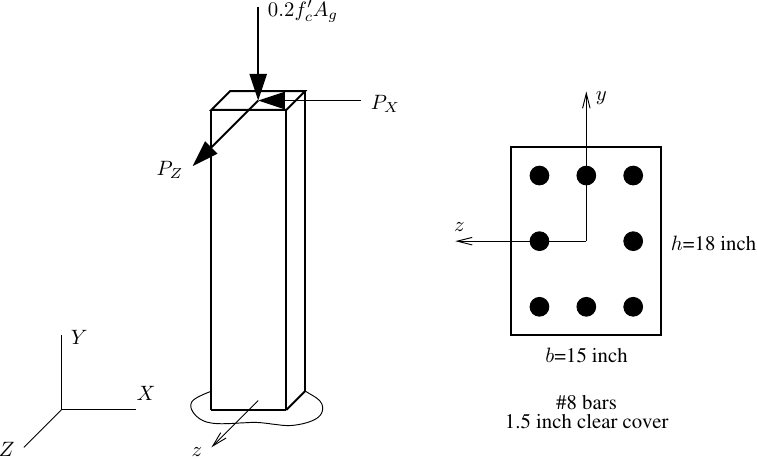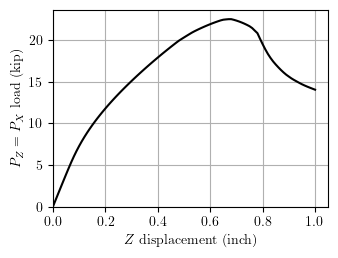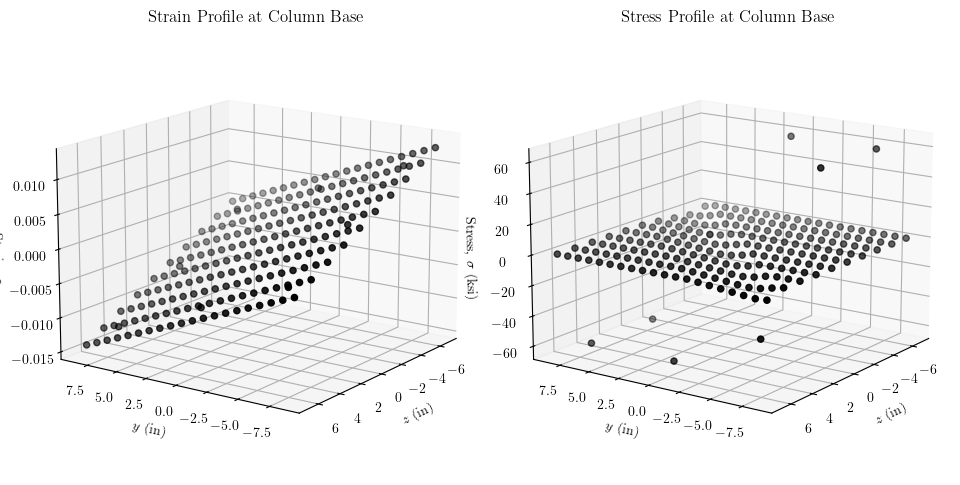OpenSees Cloud
OpenSees AMI
Plane Sections Do Remain Plane
Original Post - 15 May 2022 - Michael H. Scott
Show your support at Buy Me a Coffee.
Here’s another conversation I’ve had with a concerned user (CU) of OpenSees, not necessarily the same CU that was worried about OpenSees crashing due to non-convergence:
CU: “Do plane sections remain plane in the material nonlinear range of response?”
PD: “Yes.”
CU: “What about with force-based frame elements?”
PD: “Yes.”
CU: “How is that possible?”
PD: “Because there’s no other way to do it.”
This post isn’t about the details of how force-based elements enforce plane sections during state determination. You can read about those details here.
Instead, this post shows stress-strain output over a section in a force-based element and that the strain distribution is in fact linear.
Consider the 8 ft (96 inch) tall reinforced concrete column shown below. The model is 3D with the section z-axis oriented along the global Z-axis. Four Gauss-Lobatto points are used in a single force-based element. The concrete is unconfined with 4 ksi compressive strength while the steel is EPP with yield stress 60 ksi.

The axial load is constant at 20% of the gross axial capacity while equal lateral loads are applied in the X and Z directions. Displacement control imposes a 1 inch displacement in the Z direction at the free end of the column. The load-displacement response is shown below.

The column response passes peak capacity and goes into
localization land.
But what are the stress and strain profiles at
the base of the column at the final step of the analysis? To plot
these profiles, we can use the fiberData response option, which
returns a list of coordinates, area, stress, and strain for the
fibers in a section.
# eleTag secNum
data = ops.eleResponse(1,'section',1,'fiberData')
Ndata = len(data)
Nfibers = int(Ndata/5)
y = data[0:Ndata:5]
z = data[1:Ndata:5]
# A = data[2:Ndata:5] # If you want fiber areas
sig = data[3:Ndata:5]
eps = data[4:Ndata:5]
The funny looking Python indices grab every fifth list entry.
The resulting strain and stress in each fiber at the base of the column are shown below.

Although the stresses in the steel and concrete fibers are out of line, the corresponding strains do line up on a plane. I hope this is enough to convince you that plane sections remain plane throughout a nonlinear analysis. You will get the same planar strain distribution using the displacement-based and mixed formulations.